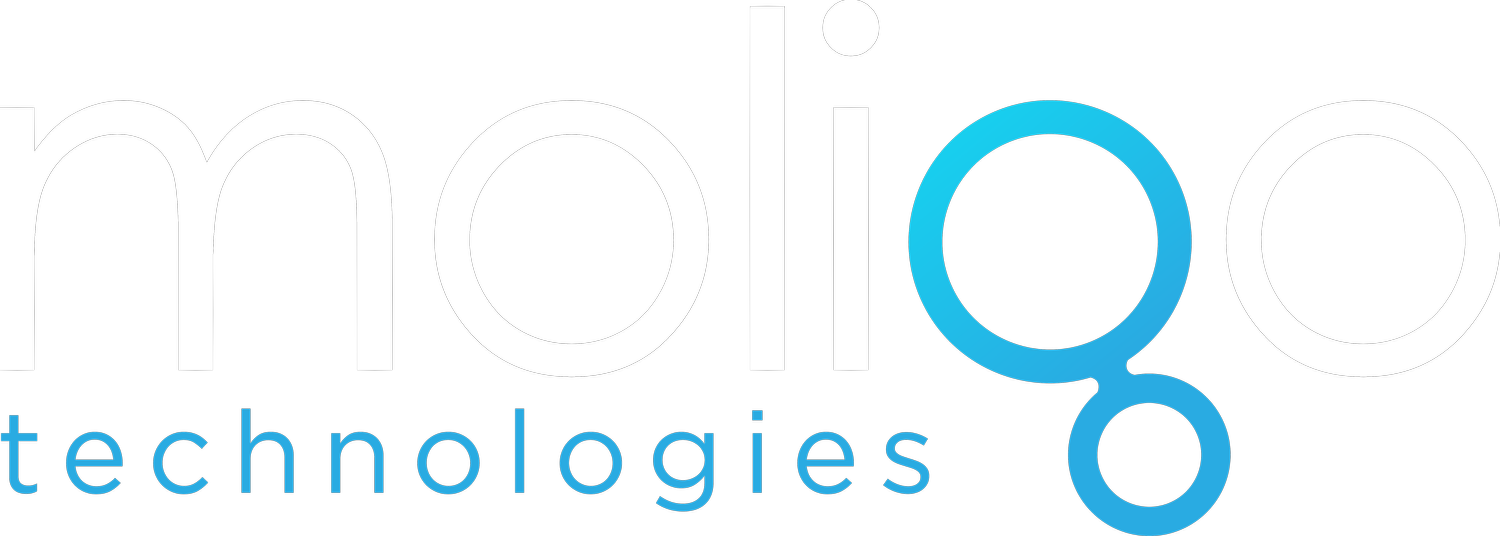2 years on: Moligo’s journey
With an idea, a vision and some would argue a healthy dose of insanity, we embarked two years ago to make our dreams for Moligo real. It was exciting - and scary - and now it seems all of all a sudden we are celebrating our 2-year birthday. We have labs, investors, 7 employees and product being shipped to some of the biggest names in Pharma and academia.
The past couple of years have been a whirlwind, in a good way. A lot has happened, and in many ways it feels like we've been around for much longer. We are still as enthusiastic about our approach to DNA synthesis - and all the innovations that will come from it - as we were when we opened our doors two years ago.
To mark the occasion, I sat down with CEO and Founder Cosimo Ducani to talk about how Moligo came to be, where we're headed and a few things in between.
1. What inspired you to start Moligo?
It almost sounds cliché to say, but the idea for Moligo was laid out on the back of a napkin with my good friend Lech Ignatowicz in a bar in central Stockholm, which I'll get to in a minute. Stepping back a bit, I was a researcher at the Karolinska Institute working on folding DNA nanostructures in the lab of Bjön Högberg. The techniques that were being developed had many applications outside of the research we were doing, which is how I got the idea that I could start a company. Initially, my thought to using DNA synthesis to produce DNA probes for in situ imaging, as this was an area that was really growing. At about the same, an article appeared in Nature that really highlighted the industrial need for long, pure stands of DNA which was something that I had been working on for some time. I knew that the oligos that I could produce could go up to 10,000 bases, which was far longer than what was being produced by any of the other de novo synthesis platforms. As I realised the size of the market, I started contemplating how to commercialize the unique DNA oligos using a new method. After a volleyball game on the Karolinska campus, I mentioned the idea to Lech, who immediately saw the potential of the technology and the business. And that's how we ended up at a bar with napkin and pen in hand, creating Moligo. Shortly afterwards, Lech became an investor in Moligo and the journey began.
2. A number of other companies are also doing DNA synthesis enzymatically. How would Moligo be different? Or would it need to be?
There was quite a lot of potential competition at the time. When we first started Moligo we were seen as “just another DNA synthesis company”. If you look more closely, the landscape of technologies and services is pretty broad. For example, some of the DNA synthesis companies produce desktop DNA printers. The idea being that you can print any oligo that you need directly in your lab. This is a fantastic innovation akin to 3D printing for DNA, and there are several companies that are doing a great job of filling this need. However, there is a great need for longer length and scale, and very few technologies and companies are able to supply it. This is where Moligo comes in. While most of the DNA synthesis companies at the moment essentially do DNA printing, Moligo takes an industrial approach. Think of us as producing DNA using injection moulding, which is a very different way. This gives us the ability to produce industrial quantities with high purity of up to 10,000 bases. This is the key for Moligo to really make a difference in the DNA synthesis space and have a lasting effect on new technologies coming out that rely on highly pure DNA strands at scale.
When you look at the DNA synthesis market through Moligo’s perspective, most of the DNA synthesis companies are complementary which brings an extra level of excitement, as we look to collaborate with truly innovative people and companies across the space.
3. Where do you see Moligo and the applications made possible because of Moligo's DNA in 3-5 years?
Our ambitions are big. We are the company that will scale the DNA revolution and bring it to the masses. No other company has the technological infrastructure to do this and our technology puts us in a very unique position. They say that the 21st century is the century of biology and we want to make sure that everyone has access to the powerful biological tools and medicines that are going to change the way we live. We want to make sure that everyone has access to enough, high-quality DNA so that the scientific progress into diagnostics, therapeutics and synthetic biology can proceed unhindered. If you look at the prices of gene therapies today, they are out of reach of many people. Rare diseases are unlikely to be considered and where treatments are available, only wealthy countries will be able to afford them. Our mission is to make these therapies available to everyone by increasing our capacity to enable gene therapies that are safe, effective and affordable.
4. Bonus question - Where does the name Moligo come from?
The name Moligo comes from monoclonal or modified -oligo. Oligo being the shortened name for oligonucleotides which is our product. The M for monoclonal is because our DNA oligonucleotides are produced from monoclonal templates which make them extremely accurate. The M for modified is because we have the technology to modify the DNA molecules we produce with various functional groups in high density, which can vary depending on downstream applications.
